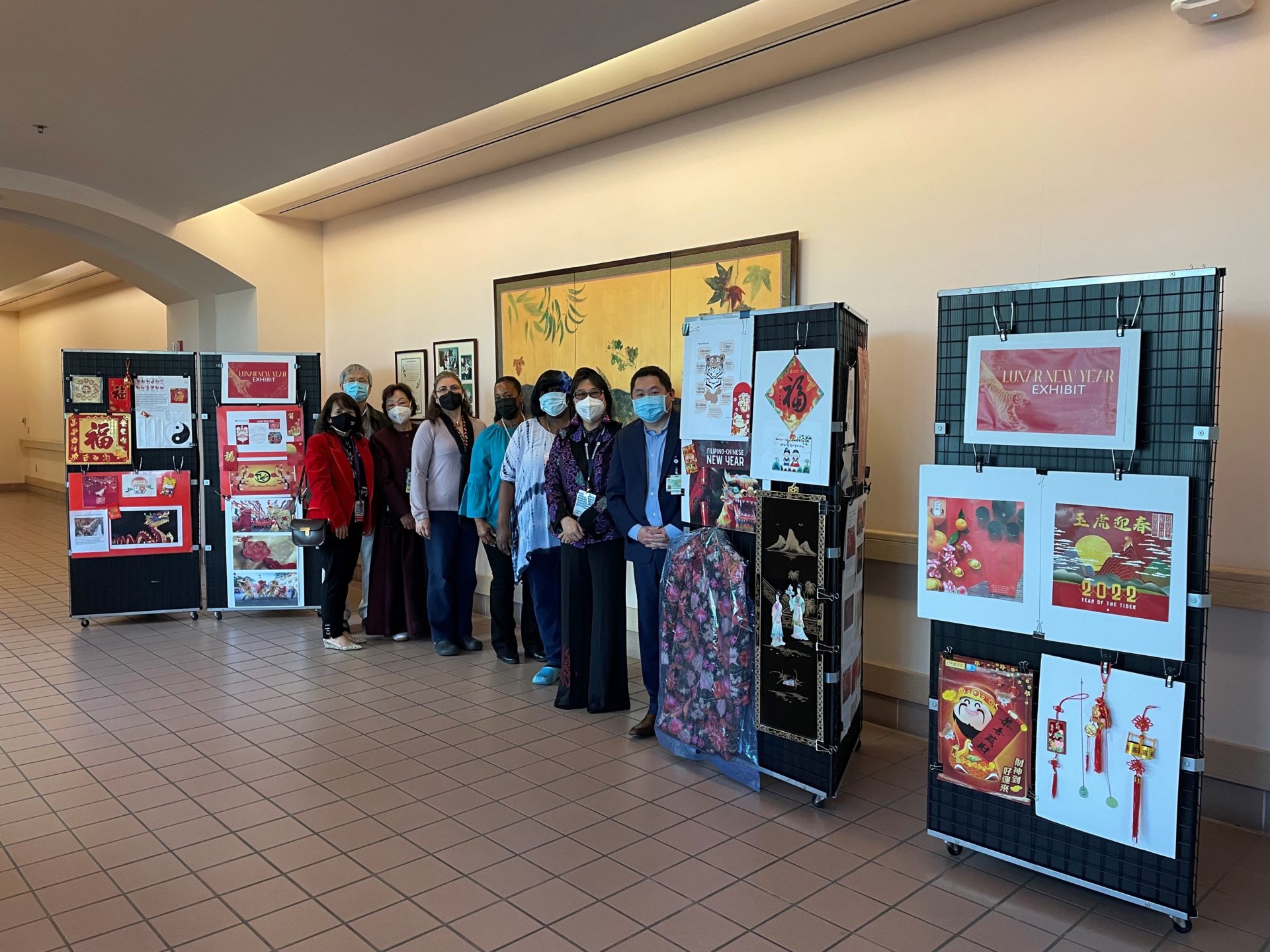Rancho Los Amigos CEO Dr. Aries Limbaga participating in the Lunar New Year Celebration
Rancho Los Amigos National Rehabilitation Center (Rancho) celebrated the Lunar New Year by having cultural exhibits on displays in February. The Lunar New Year, also known as Chinese New Year or Spring Festival, is celebrated throughout the world as the “Year of the Tiger” and begins on February 1, according to the lunisolar calendars.
Chinese New Year was first celebrated in the 14th Century B.C. during the Shang Dynasty. The festivities usually continue for 2 weeks, finishing with a lantern festival, which signals the end of the new year celebration period. The Lunar New Year is one of the most important holidays in Chinese culture, and has strongly influenced the Lunar New Year celebrations of its 56 ethnic groups, such as the Losar of Tibet (Tibetan: ལོ་གསར་), and of China’s neighbors, including the Korean New Year (Korean: 설날; RR: Seollal), and the Tết of Vietnam. It is also celebrated worldwide in regions and countries that house significant overseas Chinese or Sinophone (Chinese-speaking) populations and it is estimated that about 2 billion people around the world from various countries observe Lunar New Year.
The Chinese lunar calendar follows a 12-year cycle and each year is represented by one of the 12 animals that form the Chinese zodiac. In order, they are the Rat, Ox, Tiger, Rabbit, Dragon, Snake, Horse, Goat, Monkey, Rooster, Dog and Pig. Every Lunar New Year ushers in a new animal-signed year. The Five Elements of the Chinese zodiac are metal, water, wood, fire and earth. The last number in one’s birth year can be matched to the element listed for that number (0 or 1 is metal, 2 or 3 is water; 4 or 5 is wood, 6 or 7 is fire, 8 or 9 is earth element). The year 2022 is the year of the action-oriented water tiger, and represents strength, bravery and clearing away evil.
While the New Year is generally centered around the theme of family bonding, family members also make offerings and engage in other rituals related to ancestor worship. Other customs include the giving of red envelopes containing money, usually by elders to younger members of the family. The red color, which is also featured prominently in New Year decorations, symbolize prosperity and good fortune. At its core, the Lunar New Year is a celebration that brings the family together. A central event is the family dinner on New Year’s Eve. The choice of dishes varies, reflecting family customs and local culinary traditions. Often it includes dumplings, spring rolls, cakes, fish, chicken and pork dishes. Many of the dishes are assigned symbolic meanings. For instance, dumplings are given the shape of gold ingots, to invoke good fortune.
We are fortunate to have the opportunity to honor our workforce members and patient population from various backgrounds, cultures and their unique celebrations, which usually include traditions that symbolize prosperity, hope and togetherness.
If you have any questions, contact: Lily Wong, MA, MBA; Director, Language & Culture Resource Center lawong@dhs.lacounty.gov



